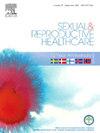Women’s experiences of the transition phase of physiological labour during freebirth: A qualitative study
IF 1.7
3区 医学
Q3 PUBLIC, ENVIRONMENTAL & OCCUPATIONAL HEALTH
引用次数: 0
Abstract
Purpose
There is a poverty of knowledge relating to the transition phase of labour and undisturbed childbirth physiology. This study explored women’s experiences of the transition phase of physiological labour during freebirth.
Background
Transition within physiological labour is described as a phase occurring as a woman ends the first stage of labour. The woman may display a range of signs and symptoms, including shaking, thirst, nausea, difficulty in communication, irritation, loss of control and inability to cope.
Aim
The study aimed to explore women’s experiences of the transition phase of physiological labour during an intended, unassisted labour and birth, known as freebirth.
Methods
A qualitative study design, using narrative inquiry was undertaken. Individual in-depth interviews were conducted with women who had experienced physiological births in Australia without the presence of registered health practitioners, doulas or childbirth attendants (n = 10). Reflexive thematic analysis was undertaken to identify themes and patterns.
Findings
Women experienced a physiological ‘peak intensity’ of labour that was individualised and nuanced. Three over-arching themes, inner world, outer world and other world, were conceptualised from data analysis. The inner world focussed on the somatic experience of labour. The outer world centred on the women’s perceptions of others and feelings of safety. The other world explored experiences of liminal space and oneness.
Conclusions
Findings support earlier studies regarding how women experience physiological processes and affirm that women experience the peak intensity of labour in individualised ways which are not reflected or supported in the common midwifery discourse. This study provides evidence about women’s experiences of physiological labour and insight into their dynamic inner, outer and other worlds. Further research is recommended into the freebirth experience in Australia from the perspective of childbirth physiology, and how the context of the birth setting, and midwifery practice may influence physiology and experience. It is also recommended that emergent knowledge on the altered states of consciousness and the sexual nature of birth be explored.
妇女在自然分娩期间生理分娩过渡阶段的经验:一项定性研究
目的关于分娩过渡阶段和不受干扰的分娩生理学的知识贫乏。本研究探讨妇女在自然分娩时生理分娩过渡阶段的经验。生理分娩过渡期是指妇女结束第一产程后的一个阶段。妇女可能表现出一系列体征和症状,包括颤抖、口渴、恶心、沟通困难、烦躁、失控和无法应对。目的:本研究旨在探讨女性在无辅助分娩(即自由分娩)过程中生理分娩过渡阶段的经历。方法采用定性研究设计,采用叙述性调查。对在没有注册保健医生、助产师或助产士在场的情况下在澳大利亚经历过生理分娩的妇女进行了个别深入访谈(n = 10)。进行了反身性专题分析,以确定主题和模式。研究发现,女性会经历一种个性化的、微妙的生理“峰值强度”劳动。三个主要的主题,内心世界,外部世界和其他世界,是通过数据分析概念化的。内心世界关注的是劳动的肉体体验。外部世界以女性对他人的看法和安全感为中心。另一个世界探索了有限空间和合一的体验。研究结果支持了早期关于妇女如何经历生理过程的研究,并确认妇女以个性化的方式经历劳动的高峰强度,这在常见的助产话语中没有得到反映或支持。这项研究提供了关于女性生理劳动经验的证据,并深入了解了她们动态的内在、外在和其他世界。建议从分娩生理学的角度进一步研究澳大利亚的自由分娩经验,以及分娩环境和助产实践的背景如何影响生理和经验。它还建议对意识状态改变和出生性别本质的新兴知识进行探索。
本文章由计算机程序翻译,如有差异,请以英文原文为准。
求助全文
约1分钟内获得全文
求助全文
来源期刊

Sexual & Reproductive Healthcare
PUBLIC, ENVIRONMENTAL & OCCUPATIONAL HEALTH-
CiteScore
2.70
自引率
5.60%
发文量
73
审稿时长
45 days
 求助内容:
求助内容: 应助结果提醒方式:
应助结果提醒方式:


